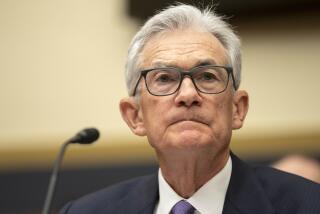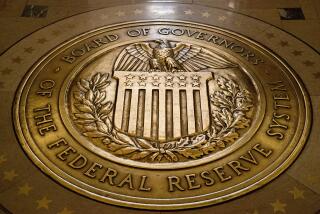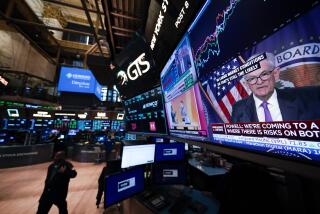Pimco’s El-Erian sees no Fed interest rate rise until at least 2016
WASHINGTON -- The Federal Reserve could start reducing its bond-buying program next month, but won’t raise its near-zero short-term interest rate until at least 2016 -- a year later than current central bank projections suggest, Pimco Chief Executive Mohamed El-Erian said Wednesday.
Speaking at a Washington panel on the economy, El-Erian predicted that policymakers would try to make more use of the Fed’s forward guidance to try to offset the recent rise in long-term interest rates.
Those rates have risen because investors have been anticipating the central bank decision to start tapering its $85 billion in monthly bond purchases.
QUIZ: How well do you understand the Fed stimulus?
“The minute that the Fed started talking about tapering … you saw interest rates taking off,” El-Erian said. “We have now priced in as a market a significant tapering starting as early as September.”
More clues about when the Fed might start reducing its bond purchases could come Wednesday, when the minutes from the central bank’s July policymaking meeting are released.
After Fed Chairman Ben S. Bernanke in late May raised the prospect of reducing the purchases, the Fed has been playing defense to assure financial markets that broader stimulus efforts would continue, El-Erian said.
The next step in that effort would be to tinker with the forward guidance it gives after each Federal Open Market Committee meeting to emphasize that point, he said.
“We are in a period where the Fed … not by choice but by necessity, is using experimental policies that have not been tested,” El-Erian said.
Just like with untested medication, there can be unwanted side-effects, he said.
The Fed has had to act because Washington politicians have been unable to agree on steps to improve economic growth. And unless that gridlock abates, El-Erian said the Fed will be forced to keep its benchmark interest rate near zero until at least 2016.
Fed officials have said they planned to keep the rate at that level as long as the unemployment rate remained above 6.5%. The rate was 7.4% in July and, according to the most recent Fed projections, would not drop below 6.5% until at least 2015.
Stanford economist John Taylor, who joined El-Erian on the panel at the National Press Club, said he also believed the Fed would not be able to start raising rates in 2015.
He said it won’t be easy for the Fed to stop its unprecedented stimulus efforts but, in the long run, the end of the policies will be good for the economy and asset prices.
Sheila C. Bair, the former chairwoman of the Federal Deposit Insurance Corp., also was on the panel and said the Fed needed to start pulling back on its aggressive intervention into the economy.
But she cautioned that the Fed needed to act judiciously.
“They’ve been in way too long, but because they’ve been in way too long, they need to get out very, very slowly,” she said.
ALSO:
Japan plans to lift economy by getting new moms back to work
Fast-food worker strikes coming to Los Angeles; higher wages sought







